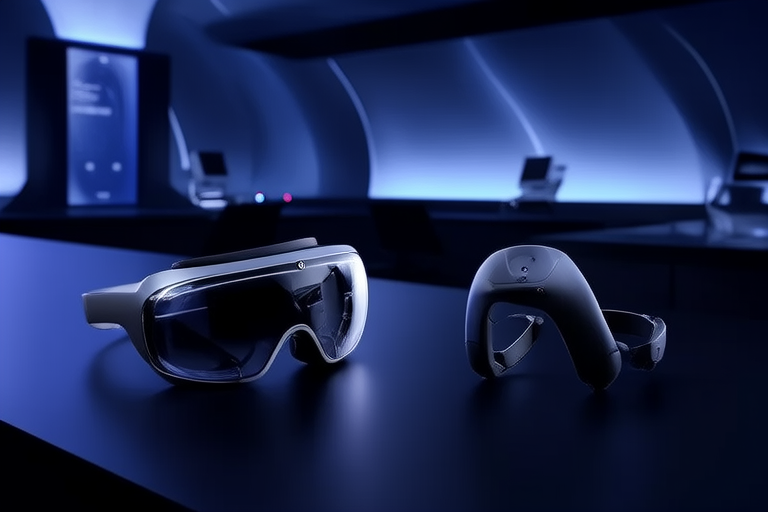“`html
Designing the Future: Innovations in VR and AR User Interfaces
Introduction
Virtual Reality (VR) and Augmented Reality (AR) have emerged as transformative technologies that are reshaping the way we interact with digital environments. These technologies offer immersive experiences that go beyond traditional screens, enabling users to engage with virtual and real-world elements in unprecedented ways. The importance of user interface (UI) design in enhancing user experience cannot be overstated, as it plays a crucial role in making these technologies accessible and intuitive. From healthcare to entertainment, VR and AR are finding applications across a wide range of industries, underscoring their growing significance.
Understanding VR and AR User Interfaces
Defining VR and AR: Virtual Reality (VR) immerses users in entirely artificial environments, while Augmented Reality (AR) overlays digital information onto the real world. Both technologies rely on sophisticated interfaces that include displays, controllers, and tracking systems to facilitate interaction.
Components of VR and AR Interfaces: Displays are central to both VR and AR, providing the visual element of the experience. Controllers enable users to interact with the environment, while tracking systems ensure accurate positioning and movement. User interface design is essential in making these components work together seamlessly, ensuring that users can navigate and interact with the digital world intuitively.
Key Innovations in VR and AR UI Design
Natural Interaction Models
Advancements in gesture recognition, voice commands, and eye-tracking technology are making interactions more natural and intuitive. Gesture recognition allows users to control virtual objects through hand movements, while voice commands enable hands-free operation. Eye-tracking technology enhances immersion by allowing users to focus on specific elements within the environment.
Immersive Visuals
Improvements in resolution, field of view, and rendering techniques are enhancing the visual fidelity of VR and AR experiences. Higher resolutions and wider fields of view provide more realistic and engaging visuals, while advanced rendering techniques ensure smooth and responsive interactions.
Haptic Feedback
The integration of haptic feedback is another significant innovation. By providing tactile sensations, haptic feedback enhances immersion and realism, allowing users to feel virtual objects and environments as if they were real.
Adaptive UI Elements
Interfaces are becoming more dynamic, adapting to user preferences and context. Adaptive UI elements allow for personalized experiences, ensuring that users can interact with the technology in ways that suit their individual needs and preferences.
Real-World Applications
Healthcare
VR and AR are revolutionizing medical training, therapy, and patient care. Medical professionals use VR simulations to practice complex procedures, while patients benefit from immersive therapies that aid in pain management and rehabilitation.
Education
Innovative educational tools and immersive learning experiences are transforming the way students learn. AR applications allow students to explore historical sites or dissect virtual organisms, providing interactive and engaging educational experiences.
Entertainment
VR and AR are having a significant impact on gaming, film, and live events. Gamers can now step into virtual worlds, while filmmakers are creating immersive experiences that blur the lines between reality and fiction.
Retail and Marketing
Brands are leveraging AR to create engaging shopping experiences. Customers can visualize products in their own homes or try on virtual clothing before making a purchase, enhancing the shopping experience.
Industrial Applications
VR and AR are being used in manufacturing, maintenance, and remote collaboration. Engineers can visualize complex machinery and perform maintenance tasks virtually, improving efficiency and safety.
Challenges and Future Directions
Despite the advancements, VR and AR UI design face several challenges, including hardware limitations and user comfort issues. Potential solutions involve advancements in AI-driven personalization and seamless cross-platform integration. Ethical implications and privacy concerns must also be addressed to ensure responsible development and deployment of these technologies.
Conclusion
VR and AR user interfaces are poised to transform the future of human-computer interaction. As these technologies continue to evolve, they will offer increasingly immersive and intuitive experiences across a wide range of applications. It is essential for stakeholders to stay informed about ongoing developments in this rapidly evolving field to harness its full potential.
“`

